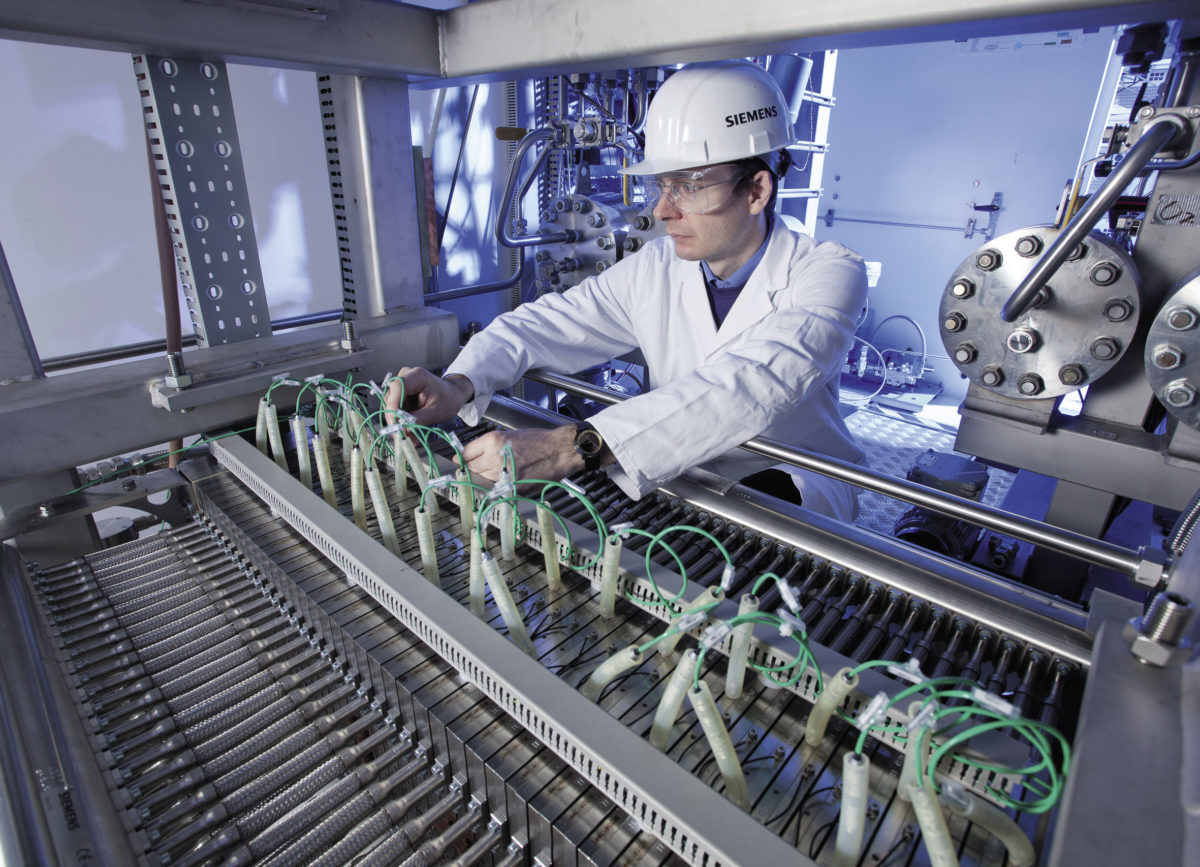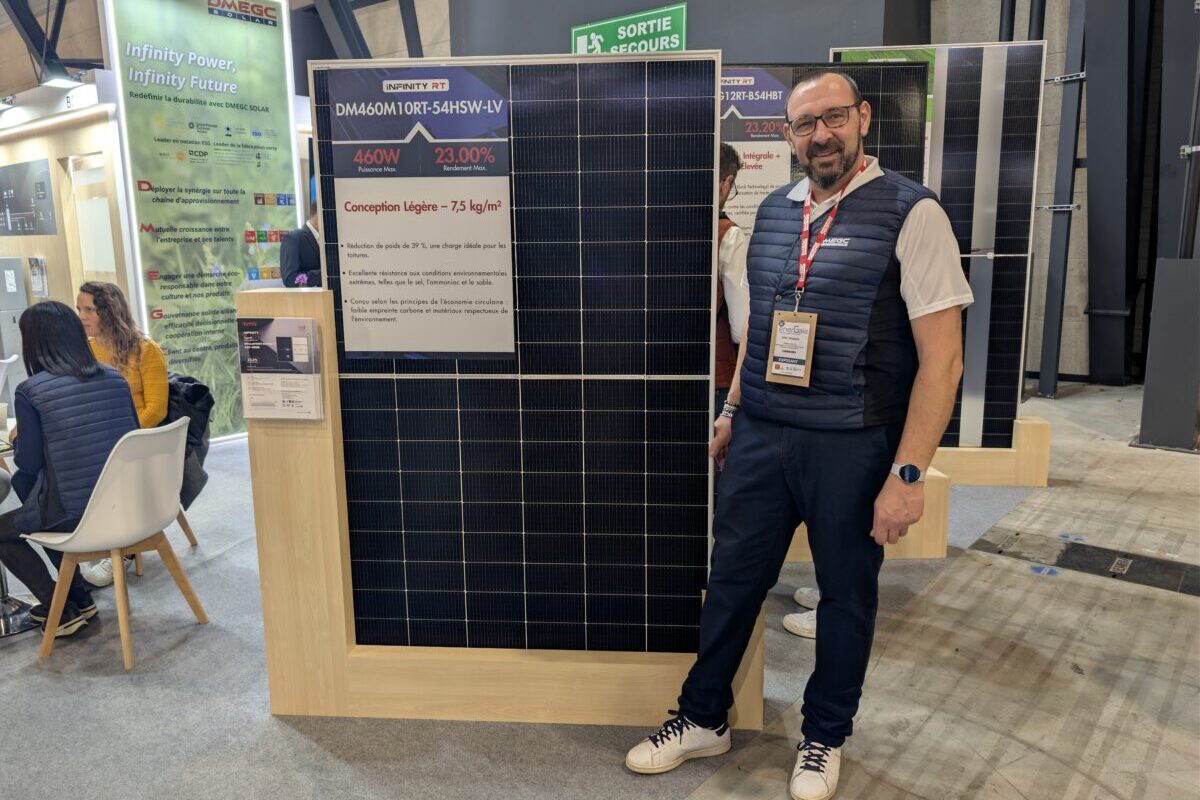From pv magazine, April edition
It is certainly an attractive scenario for acceleration of the energy transition. As renewables do their bit in reducing carbon emissions from the electricity sector, synthetic gases – hydrogen and methane – open up a further possibility for greening the gas network. They can also be used to store excess solar and wind energy over long periods of time and to address seasonal intermittency challenges in the grid after being converted back into electricity.
Hydrogen and methane from green electricity sources can also play a role in sector coupling, be it for heating, transport, or industry. So-called ‘syngases’ can also be produced from fossil fuels and biomass. Power-to-gas (P2G) refers to the use of renewable electricity to produce these gases through electrolysis and methanation. But there is a downside: During these processes a lot of energy is lost.
Average efficiencies of electrolyzers, which use renewable electricity to break water down into H2 and oxygen, exceed 70%, and this conversion efficiency can be assumed for on-site use and direct feed-in to the gas network. If the gas needs to be stored and transported, compression or cooling of hydrogen brings losses which can go up to 35%. If hydrogen is reconverted into electricity through fuel cells, the overall process efficiency ends at 30-35%, with significant amounts of energy lost as heat.
Additional synthesis processes can be used to convert hydrogen gas into methane. While the advantage of the process is that the final product is the gaseous energy source which is already the main component of conventional natural gas and can therefore be freely injected into the gas grid, additional energy loss of around 8% is inevitable.
How soon is now?
There are different assumptions about the point at which P2G will go mainstream and become cost competitive. An international team of economists from Germany’s Technical University of Munich, the University of Mannheim, and Stanford University in the United States says Germany and the U.S. state of Texas could already host small wind-powered P2G projects that could compete in cost terms with conventional power sources, while large-scale should be viable by 2030.
Another report commissioned by the European Climate Foundation suggests a fossil fuel-free energy system in Europe by 2050 should largely rely on smart electrification and energy efficiency, which could turn out 36% cheaper than green hydrogen at scale, but still considers hydrogen viable where it adds the highest value, such as with seasonal storage and peak power supply. And yet another study for the Hydrogen Council (2017) envisages that by 2050, 18% of global final energy demand could be met by hydrogen, equal to about 78 exajoules (EJ), while the economic assessment by the International Renewable Energy Agency (2018) estimates hydrogen’s economic potential at about 8 EJ globally by 2050 in addition to feedstock uses. While the Hydrogen Council roadmap is the industry’s consensus vision of hydrogen’s potential in the economy under the right circumstances, it is just one vision of numerous potential outcomes; IRENA’s assessment looks at the mix of options to achieve targets set out in the Paris Agreement, ranking options by their substitution cost.
Oslo-based energy advisory firm DNV GL forecasts demand for hydrogen in the energy sector to rise from about 1,000 metric tons today to 39-161 million metric tons per annum in 2050, under various scenarios. Its most recent study into green hydrogen concludes that production of hydrogen from electrolyzers will become competitive with production from natural gas by 2035. “Our research shows there is a competitive position for green hydrogen,” says Theo Bosma, Program Director Power and Renewables at DNV GL. Clearly, competitiveness is directly dependent on the composition of the power system, that is high penetration of solar and wind that causes frequent oversupply. “We analyzed developments up to 2050, and saw there can sometimes be even 3,000 hours of oversupply, so it means it’s absolutely competitive. But, it will be already [the case] in 2035 that it will start to make sense to produce hydrogen through electrolysis, with a sufficient number of hours of low electricity prices compared to steam methane reforming, where you obviously need to pay the penalty for the CO2 emissions,” Bosma says – noting that in the end, it’s all about the cost of electricity.
Yes, but first
As for the main reasons for the economic feasibility of hydrogen between 2030 and 2050, DNV GL points to three key developments: falling costs of electrolyzers, increasing periods when low or zero cost prices for electricity are available, and the introduction of carbon taxes and incentives for low carbon solutions. Indeed, the introduction of supportive P2G policies worldwide remains critically important. For instance, investments in Germany thus far have been hampered by regulation, since electrolyzers are classified end users of green power and subject to all corresponding taxes and levies. Another issue is a lack of stronger carbon pricing.
German transmission system operators are nonetheless striving to pave the way to the coupling of electricity and gas networks for the energy transition. Tennet, Gasunie Deutschland and Thyssengas are working on a 100 MW P2G pilot plant in Lower Saxony, and Amprion and Open Grid Europe are deploying a project of the same size in the district of Emsland. Such large-scale projects are critically important for P2G project capex to be reduced.
“Economies of scale are a factor, especially regarding fuel cells. The storage system is a part of the whole application, but we are already using components that are produced in large quantities, such as steel cylinders,” says Wolfgang Wolter, CEO of Germany-based Wystrach.
There are also large-scale initiatives in the gas sector. Last year Australia’s gas pipeline owner Jemena launched the nation’s biggest trial to generate hydrogen from renewables and inject it into the existing gas network. This could see approximately 250 homes in Sydney using the fuel within five years. Thus far, acceptance of the technology has been hampered by safety concerns, particularly regarding fire risk. “It is a misconception that hydrogen applications are of great risk. Safety standards are high, and before an application enters the market it is proven and tested very well,” says Wolter.
As large energy input is needed for P2G to work, feedstock has to be unlimited and free. In such a case, conversion efficiency would not be the most critical metric, and the technology could do its bit on deep decarbonization. Speaking about prospects for further development, Kaila Haines, Marketing Director at Nidec ASI notes that it is complex when many different actors must all coordinate their product development efforts in order to make solutions accessible where they are needed along the entire supply and demand chain.
“With more and more players announcing projects, the cost of the technology is decreasing, making the introduction of the technology at the consumer level more and more interesting. Now health and safety standards have to catch up and legislators need to get in on the act too,” says Haines.
The times they are a-changin’
P2G makes seasonal storage of renewable electricity in gas grids possible and this could help stabilize electricity grids as well as cut the costs of grid expansion. On top of that, the technology can also play a role in transport decarbonization. A project in northern Germany initiated by GP Joule is using a tanker to supply hydrogen gas stations in nearby towns, where local buses and an increasing number of other vehicles refuel several times a week. Hydrogen is produced by on-site wind-fueled electrolyzers with around 74% efficiency, supplied by GP Joule subsidiary H-TEC Systems. The manufacturer is seeing more customers willing to buy their technology.
“Time has moved on,” says Frank Zimmermann, Managing Director of H-TEC Systems. “A few years ago, we had all these philosophical discussions at trade shows about how and where we can deploy hydrogen, people were approaching us saying they had too much energy from their renewable plants and were wondering if there is anything they can do with hydrogen. When we talk with customers today, it is all about concrete projects.”
Today, an electrolyzer costs between €1,000 and €2,500 per kilowatt of output, but material and manufacturing costs are expected to decrease. “I see the same trajectory as in the solar industry 20 years ago. As my physicists say, when you look at the stacks, you will see the same learning curves we have seen in photovoltaics, because these are literally only cells you are stacking together. They will scale,” says Zimmermann.
Once the costs of investing come down, driven by economies of scale, electrolyzers will turn from price takers into price makers. But, there will still be a few more boxes to tick for a large-scale market launch to happen. “We are already working on commercial plants for tier-1 players so as far as we are concerned P2G is already going mainstream,” says Nidec’s Haines. “But larger-scale deployment won’t occur until the infrastructure is more widely available.”
This content is protected by copyright and may not be reused. If you want to cooperate with us and would like to reuse some of our content, please contact: editors@pv-magazine.com.




Catalysed hydrogen can be upgraded to ammonia as well as methane. It’s not particularly nice stuff to be around, but it does have two big selling points over methane. One, it’s not a greenhouse gas and nor are its main combustion products, nitrogen and water. Methane is, and so is its combustion product carbon dioxide, so for sustainability the carbon has to be sourced from biomass. Two, the boiling point of ammonia is only -33 degrees C, halfway between those of the common industrial gases propane and butane. This means that ammonia does not need expensive refrigeration like liquid methane or hydrogen, and can be transported at ambient temperature either as a gas in a pipeline or as a liquid under pressure in an ordinary steel container like the hydrocarbon gases just mentioned. (You do need to take precautions against the emission of nitrous oxides when ammonia is burnt as fuel.) It’s one of the leading contenders for decarbonizing shipping. A fair amount of work is going into P2G ammonia.